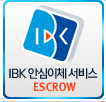서정아트프린팅
News
- 등록일
- 22-06-21 11:35
- 조회수
- 78
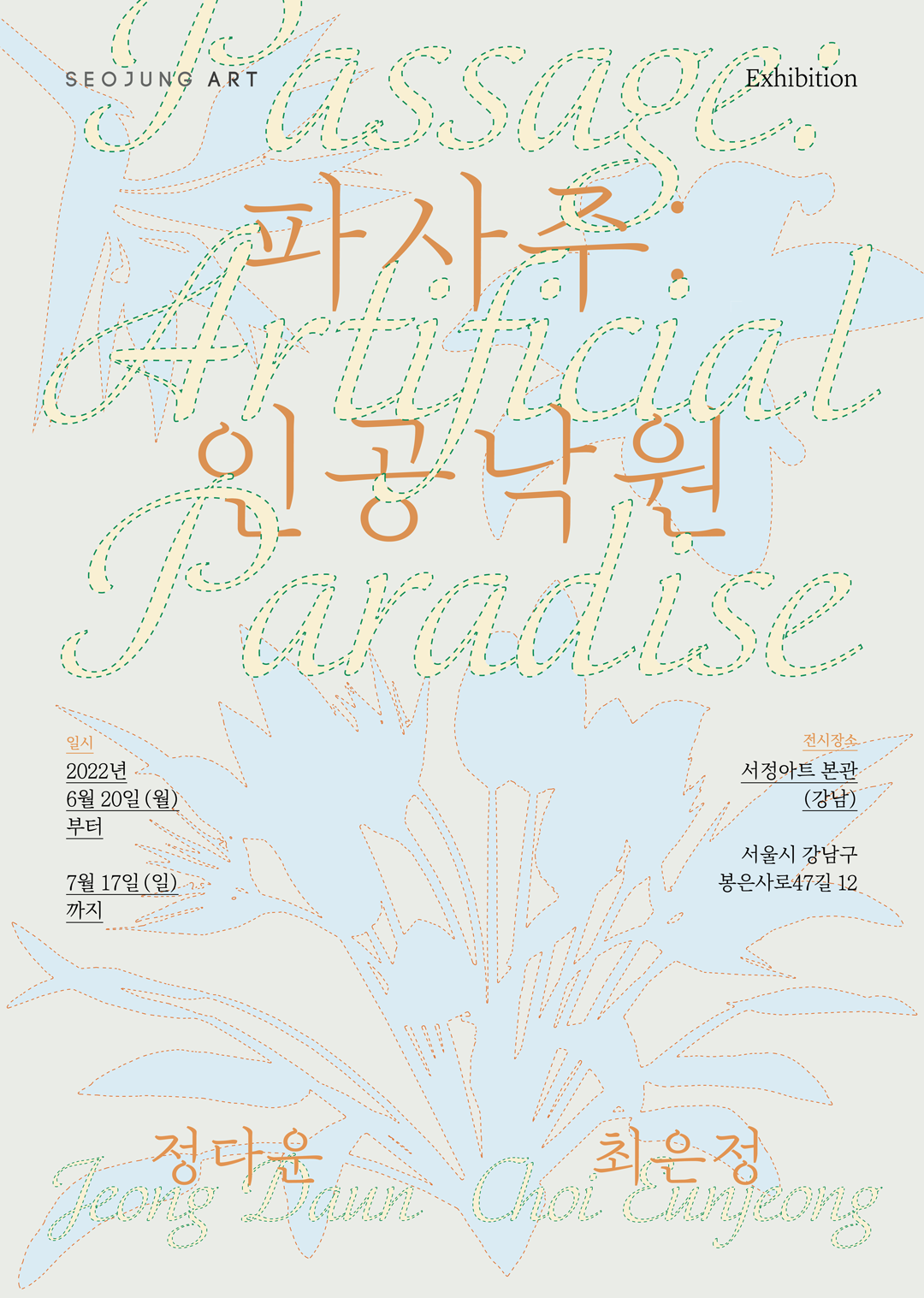
서정아트는 2022년 6월 20일부터 7월 17일까지 정다운, 최은정 작가의 2인전 《파사주: 인공낙원 Passage : Artificial Paradise》展을 개최한다.
특정 대상을 재현하고 구체화하는 대신 일상에서 쓰이는 소재를 활용해 감정의 즉흥성을 드러내는 정다운 작가의 ‘패브릭 드로잉’과 평면 안에서 무한한 상상을 끌어내 허구의 세계로 이끄는 최은정 작가의 작업은 시-공간에 대한 설계이자 유희적 공간으로 통한다. 이 두 작가의 작업 안에서 발견되는 모든 주제와 소재는 신선하게 다가오는 동시에 익숙하며, 낯선 감각을 제공하는 한편 완벽하게 이질적이지 않다. 보았던 것, 기억하는 것, 느꼈던 형상에 의존하지 않고 촘촘하게 설계된 기호들로 이루어진 제3의 공간은 우리가 실제로 ‘보는 것’과 ‘상상하는 것’ 사이의 통로 역할을 한다.
정다운 작가는 재료의 특성을 전환하여 물감이 아닌 천으로 그림을 그리는 ‘패브릭 작업’을 한다. 물감을 섞듯 천의 색감을 배열하고 때로는 가죽과 레이스 등 특정 상황과 감정에 어울리는 재료를 주체적으로 선별한다. 작가의 손을 거친 천 조각들은 크기를 달리하며 펼쳐지고 늘어지면서 견고한 캔버스 틀을 감싼다. 그때 그 장소, 시간에서만 느낄 수 있던 개인의 감정은 역동적인 천의 움직임과 함께 기록되는데, 작가는 때로 그것들을 다시 얇은 천으로 덮어 감추는가 하면, 작업 당시 들었던 음악을 떠올리며 하나의 선율을 표현하기도 한다. 천이 지닌 재질의 특성으로 구현할 수 있는 모든 가능성을 확장한다는 점에서 새로운 시선과 감각을 필요로 한다.
전시 공간을 구성하는 패브릭 천들은 겹침을 통해 틈을 생성하며 관람자의 시선을 끌어 촉감을 상상하게 만든다. 작품이 된 소재들의 본래 목적은 무엇이었는지, 작품의 일부가 된 이후의 쓰임은 어떠한 지 생각할 거리들을 던져주면서 자연스레 재료는 도구와 수단이라는 목적성을 떠나 이야기를 만들어가는 하나의 주체가 된다. 이처럼 새로운 재료를 물색하고 그 성질을 연구하는 작가의 실험적 태도는 사물과 작품 사이 양방향의 소통을 시도하려는 작가의 의도를 반영한다.
디지털 세상 안을 들여다보듯 현란한 기호들로 가득 채운 최은정 작가의 작업은 우리가 접하지 못한 판타지적 상상을 가능하게 한다. 작가는 가상의 세계를 만들어 그 안에서 펼쳐지는 장면들을 기억의 한 조각처럼 엮어 공간 속의 공간을 반복적으로 생산한다. 입체적인 물감 덩어리들의 물성은 때로 착시를 일으켜 관람자로 하여금 2차원의 캔버스를 인식하기 전에 전혀 다른 차원을 보는 듯한 낯선 시선을 요구하는데, 낙원처럼 묘사된 경쾌한 화면은 낯섦에 대한 거리감 대신 오히려 이상적인 공간을 떠올리게 한다. 현실에 부재하는 낯선 구도, 비논리적인 공간, 기하학적 세계의 고리들은 모두 ‘헤테로에코토피아'를 나타낸다. 미셸 푸코가 처음 제시한 개념 ‘헤테로토피아(일상의 공간과는 ‘다른 공간)’와 생태학적인 유토피아를 결합한 이 용어는 작가의 작품을 가장 적확하게 나타내는 말이다.
역사적으로 유토피아를 작품에 담아내는 방식은 크고 작은 변화를 겪으며 복합적인 형태로 나타났다. 시공간을 파악할 수 없는 배경과 대리석 신전, 야생성이 제거된 표범 가죽을 베고 누운 여인 등 고전 모티프를 활용하며 신화 속 낙원의 모습을 그대로 재현하는 방법 외에도 다양한 장치들이 고정적으로 등장한 것이다. 그러나 최은정 작가는 꿈속에 꿈을 더하듯, 기존에 우리가 보아왔던 세상을 뒤틀어 또 다른 풍경을 만들어내고, 그 안을 촘촘한 조형 요소들로 채워 조합하고 해체하면서 반복적인 행위를 거듭한다. 전통 회화보다 디지털 아트에 가까운 이미지들은 사실 작가가 쌓아 올린 터치로 빚어진 결과이자 노동집약적 행위의 산물이다. 이는 초현실적인 상상으로만 실현 가능하던 낙원이 작가의 손을 통해 구조적이고 탄탄한 기억들로 재편집되는 과정을 보여준다.
본 전시에서 명시하는 '파사주'는 19세기 초반 파리에서 처음 발터 벤야민 (Walter Benjamin, 1892-1940)에 의해 탄생한 개념으로서 '새로운 도시 풍경’이자, ‘새로운 볼 거리’를 제시하는 시각적 유토피아다. 당시 파리의 거리를 장식하는 시각 요소들이 늘어나면서, 일상생활은 점점 현실 세계로부터 동떨어진 화려함과 아름다움으로 바뀌어 낯선 효과를 발생시켰다. 과거는 고정된 실체로 존재하지 않고 기억에 의해, 그리고 표현의 가능성을 통해 끊임없이 재편집되어 유동적인 형체로 남는다. 정다운 작가의 주소재인 ‘패브릭’과 최은정 작가의 상상적 공간은 모두 ‘파사주’와 한 부분을 공유한다. 전시에서 만나는 평면과 설치 작업, 쌓이고 덧댄 시각 혼합물들이 관람객들을 새로운 상상적 공간으로 이끄는 가교 역할을 하기를 기대한다.
전시작가
정다운, 최은정
Seojung Art is pleased to announce Passage: Artificial Paradise featuring works by Jeong Daun and Choi Eunjeong from June 20 to July 17, 2022.
Jeong Daun utilizes materials that are used in daily life to express spontaneous feelings through “Fabric Drawing” instead of reproducing and embodying subjects. Meanwhile, Choi Eunjeong’s works draw out limitless imagination from a flat surface to draw viewers into a fictitious world. These two artists present such an amusing space, designing time and space. All subjects and materials found in their works feel both new and familiar, and also unfamiliar yet not completely foreign. The Third Space is made up of finely designed signs that do not rely on what has been seen, remembered, or felt before and acts as a passage between what we “see” and what we “imagine.”
Jeon Daun draws “Fabric Drawing,” changing a material’s characteristics to draw with fabric rather than with paint. Fabric is arranged as if mixing paint, and other materials such as leather or lace are used depending on the circumstances and the feelings being expressed. Fabric pieces made by the artist are shaped differently, spread, and stretched to cover the sturdy canvas. The emotions felt by the individual in that one space and time are remembered along with the dynamic movements of the fabric. The artist covers these pieces in a thin cloth as if to hide them, and brings to mind the music that the artist was listening to while working on them to present another melody. All of the possibilities that can be realized with the characteristics of the fabric are expanded upon, requiring a certain perspective and sensation to experience the exhibition.
The fabric pieces that make up the exhibition space are overlapped to create gaps that attract attention and make viewers imagine how they would feel to the touch. The exhibition makes viewers think about how the materials were originally used and how they fit into the exhibition. The materials are naturally more than just tools or methods for a certain purpose, and become the subject for a story to be told. The artist’s experimental attitude in searching for new materials and studying their characteristics reflects the artist’s intention to create communication between objects and their artworks.
Choi Eunjeong’s works are filled with elaborate symbols as if to create a digital space allowing the viewer to imagine a fantasy world. The artist creates a virtual world and ties together scenes inside the world to form memories, making a space inside a space over and over again. Materiality of three-dimensional paint sometimes creates an optical illusion that requires to be viewed as a completely different dimension before being recognized as a two-dimensional canvas. The cheerful painting depicted like a paradise makes the viewer think of a perfect space instead of giving distance from the unfamiliar. The unfamiliar composition, illogical space, and geometric links that can’t be seen in real life all represent a “hetero-ecotopia.” This term is combined the concept of “heterotopia,” first elaborated by Michel Foucault, “different space” from the everyday space, with ecological utopia. “Hetero-ecotopia” is the most accurate word to represent Choi’s work.
Historically, ways to create a utopia in an artwork have undergone both small and great changes, and have been presented in complex manners. Classic motifs such as an unknown background, marble temple, a woman lying on a leopard skin stripped of its wildness, and other methods were consistently used. But Choi created remarkably different sceneries by twisting the world we already knew, filling with formative elements, combining and breaking them repeatedly, just like adding dreams within dreams. The images, closer to digital art than to traditional paintings, are results of the artist’s accumulated strokes and labor-intensive actions. This utopia that could only be conceived by surreal imagination shows that it can be recompiled into structural and firm memories through the artist’s hands.
The “passage” specified in this exhibition is a concept first created in the early 20th century in Paris by Walter Benjamin (1892-1940) that suggests a visual utopia with a “new city landscape” and “new spectacles.” At that time, visual elements decorated the streets of Paris were increased, creating an unfamiliar effect where daily life gradually drifted into a different kind of splendor and beauty. The past does not remain as a fixed truth, and is made fluid by being endlessly reedited through the possibility of expression and memories. Jeong Daun’s fabric and Choi Eunjeong’s imaginary space both share a piece of the “passage.” The planes, installation, and blend of stacked and added visual materials are anticipated to serve as a bridge between the viewer and a new imaginary space.
Artist
Jeong Daun, Choi Eunjeong
2022. 06. 20. 월 ~ 07. 17. 일
장소
서정아트 강남
서울 강남구 봉은사로47길 12
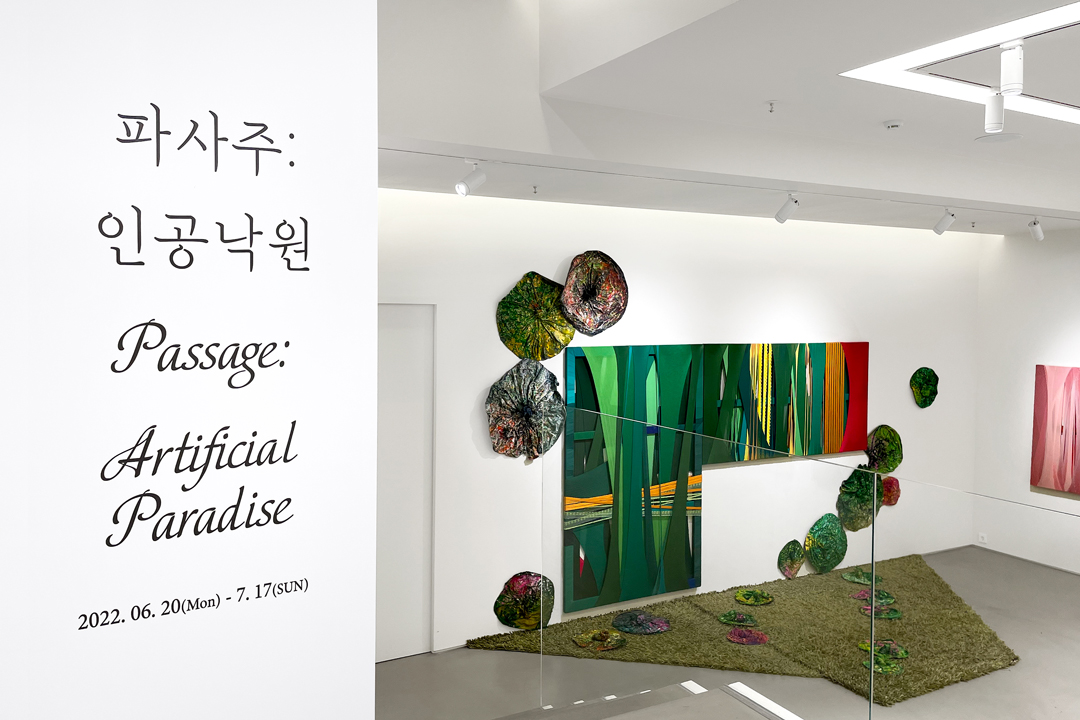
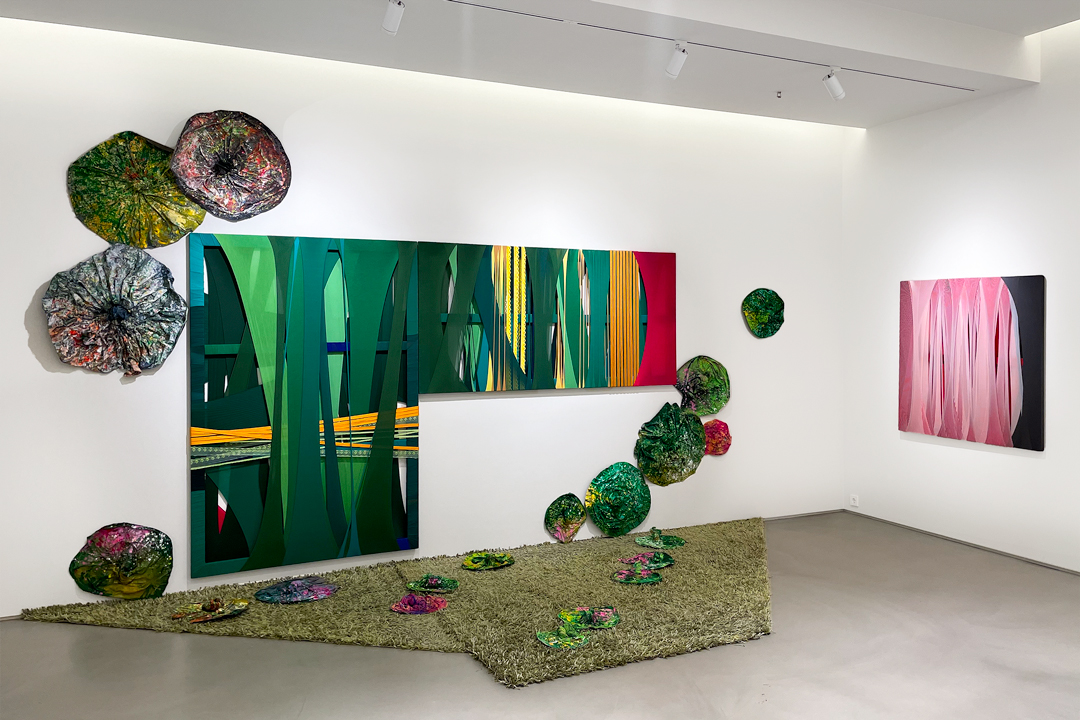
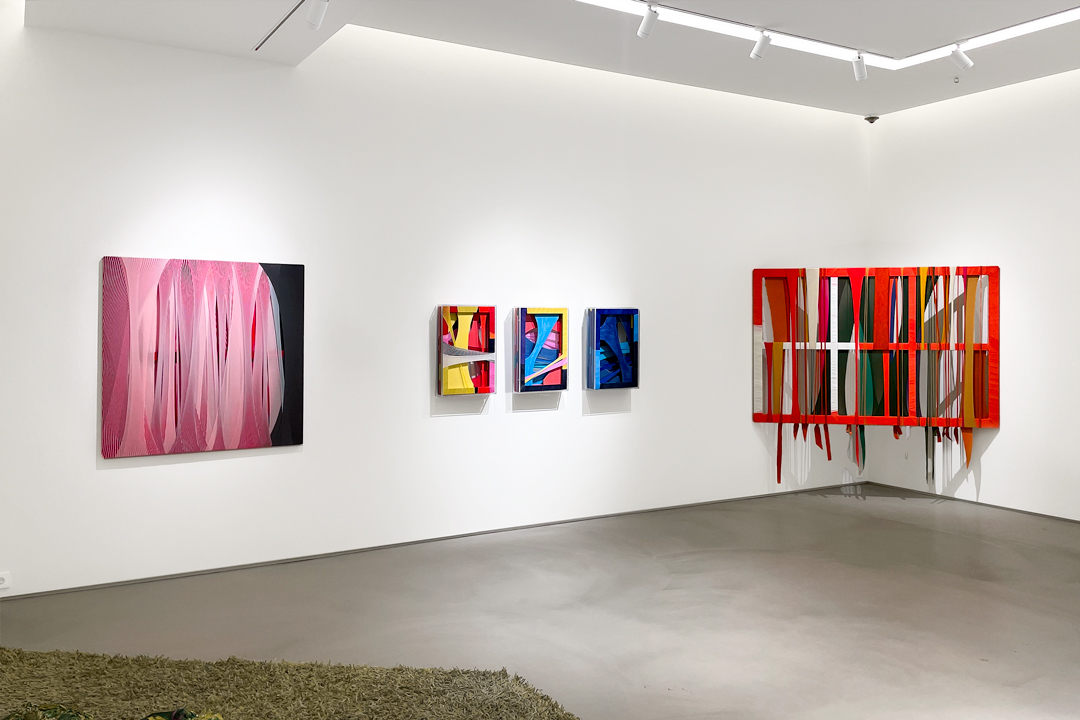
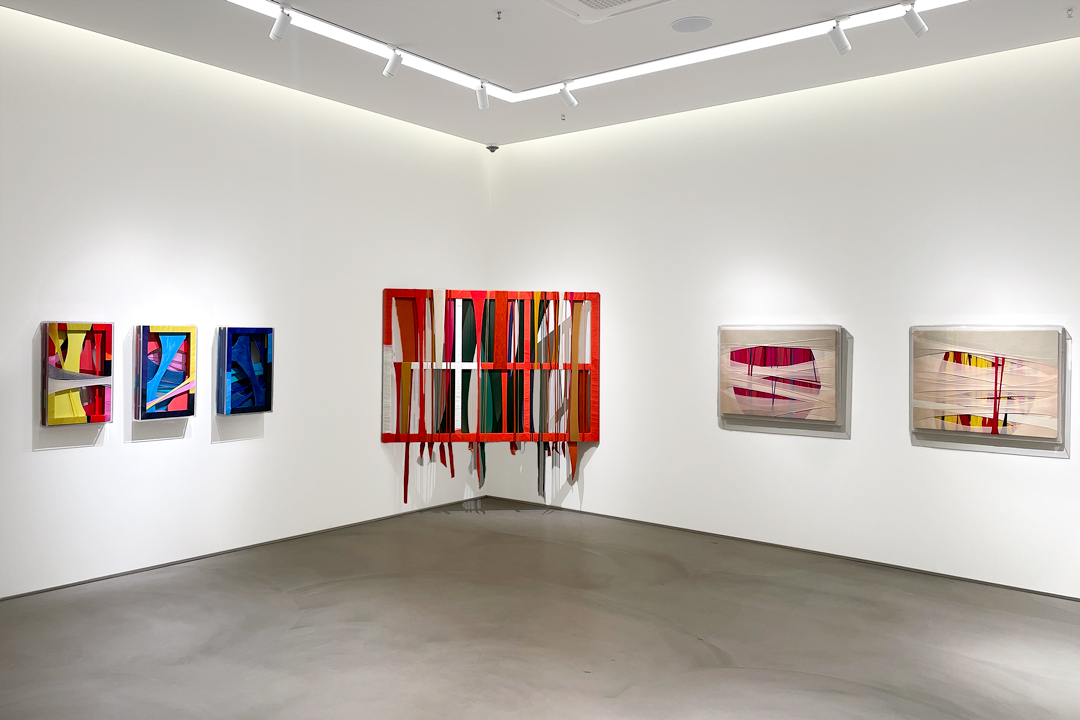
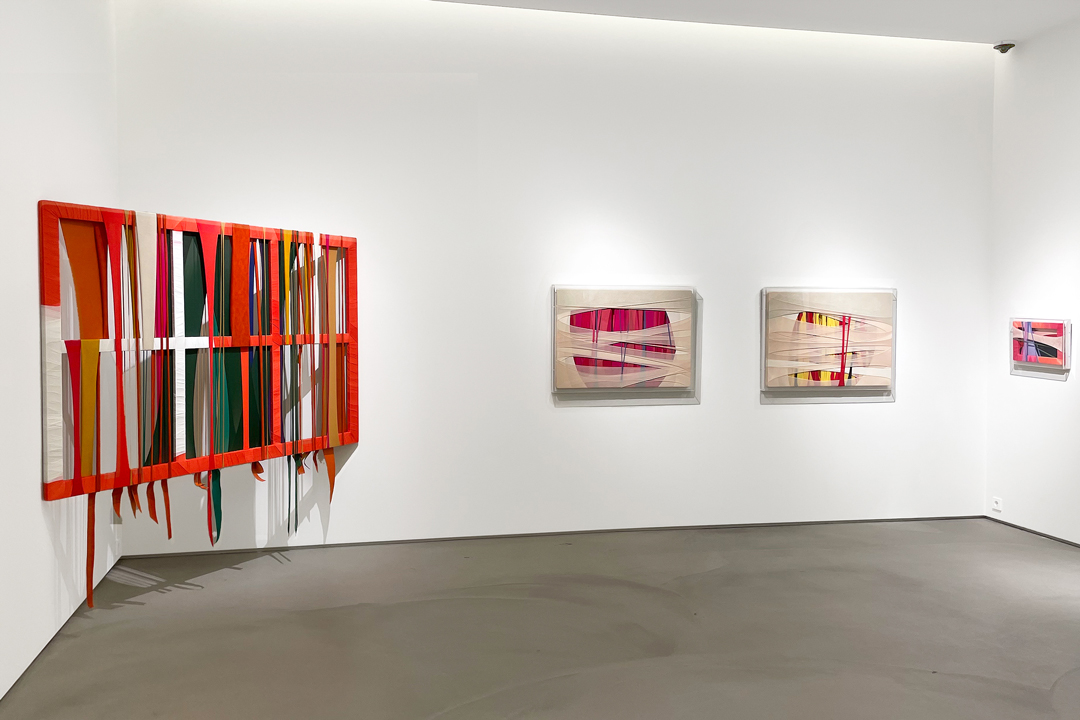
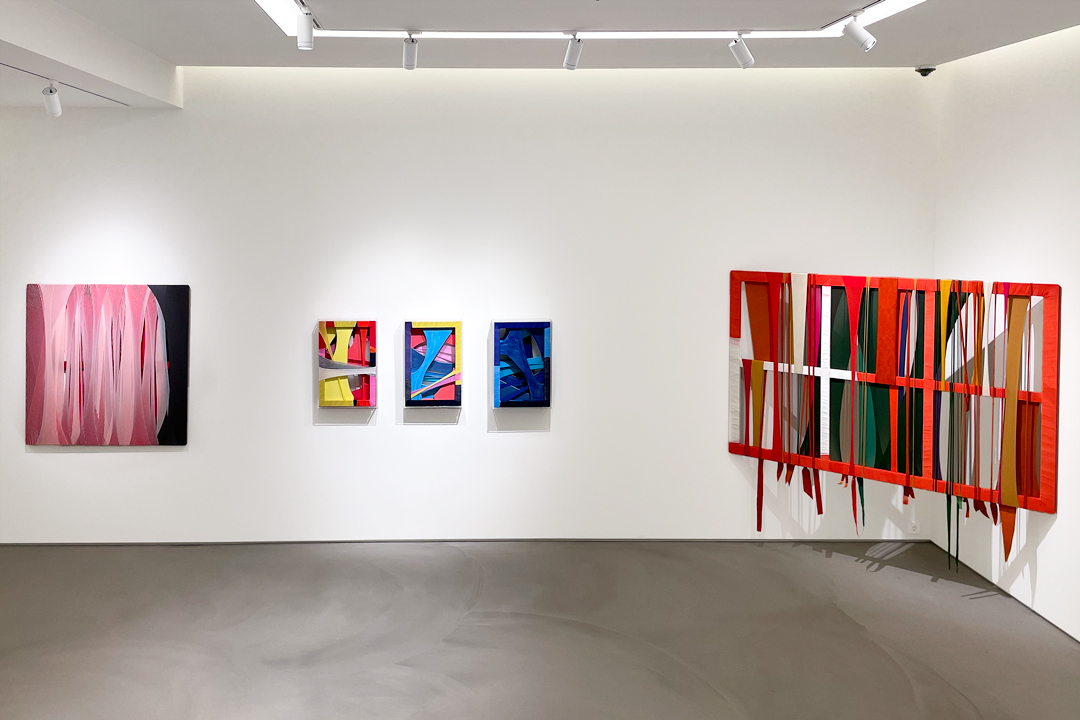
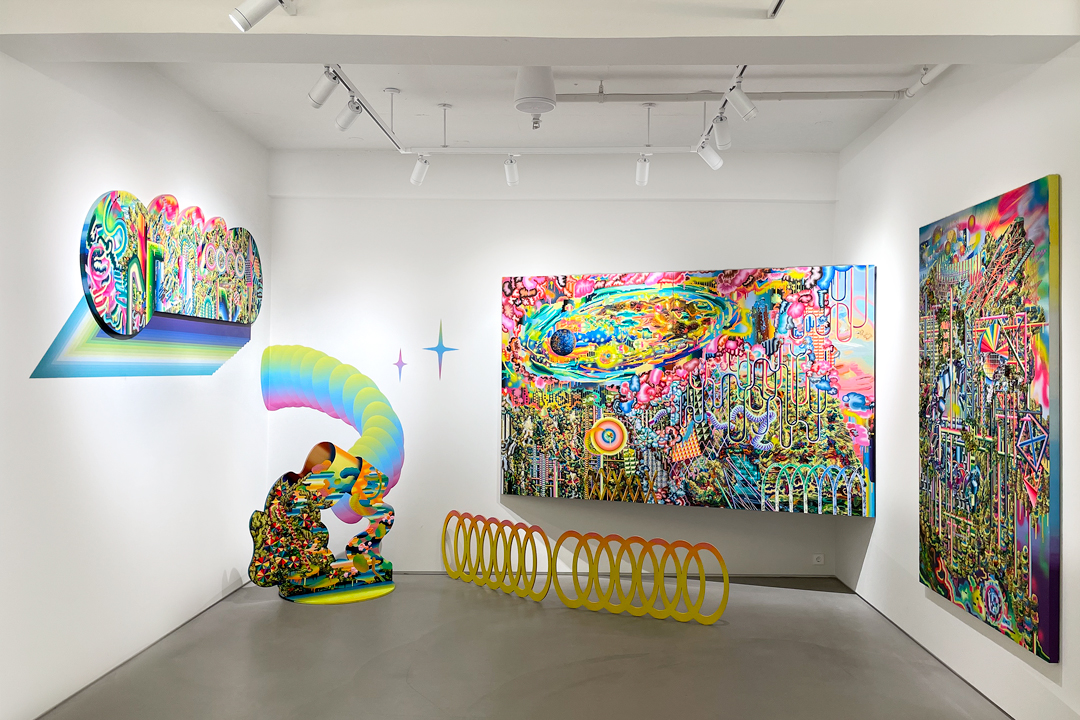
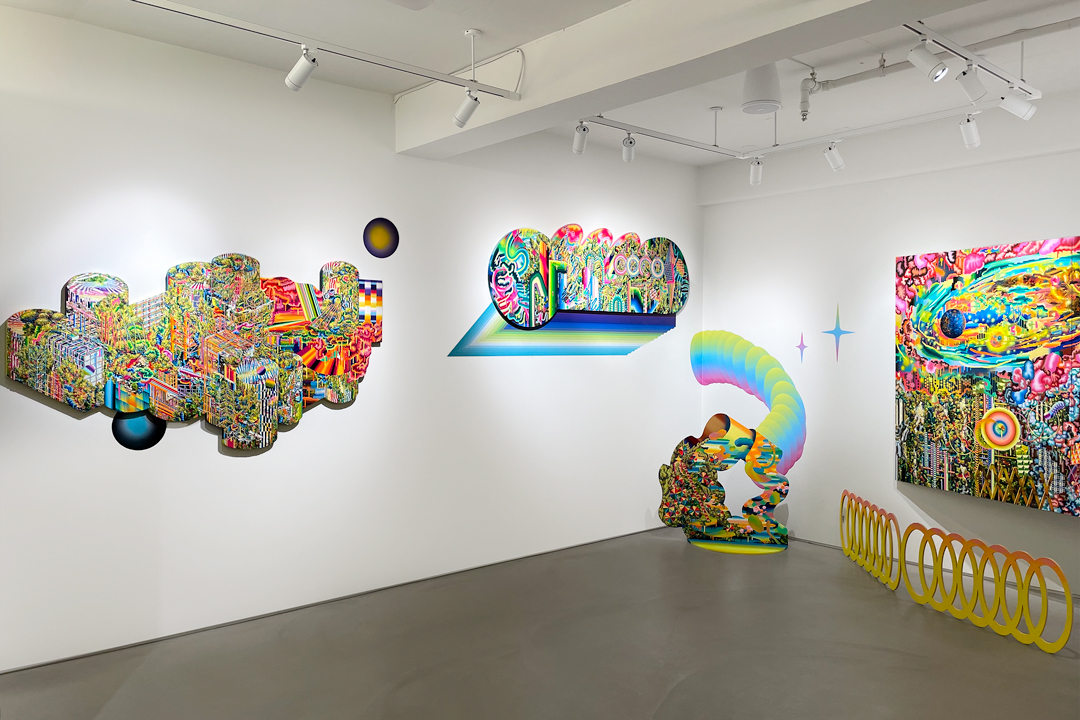
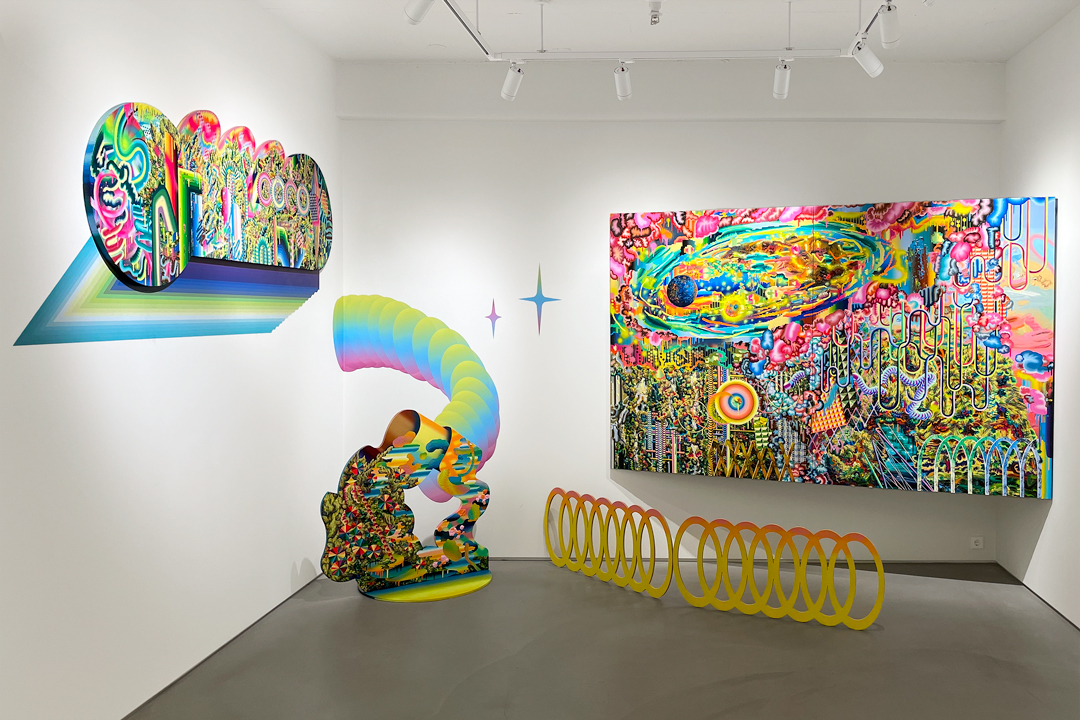
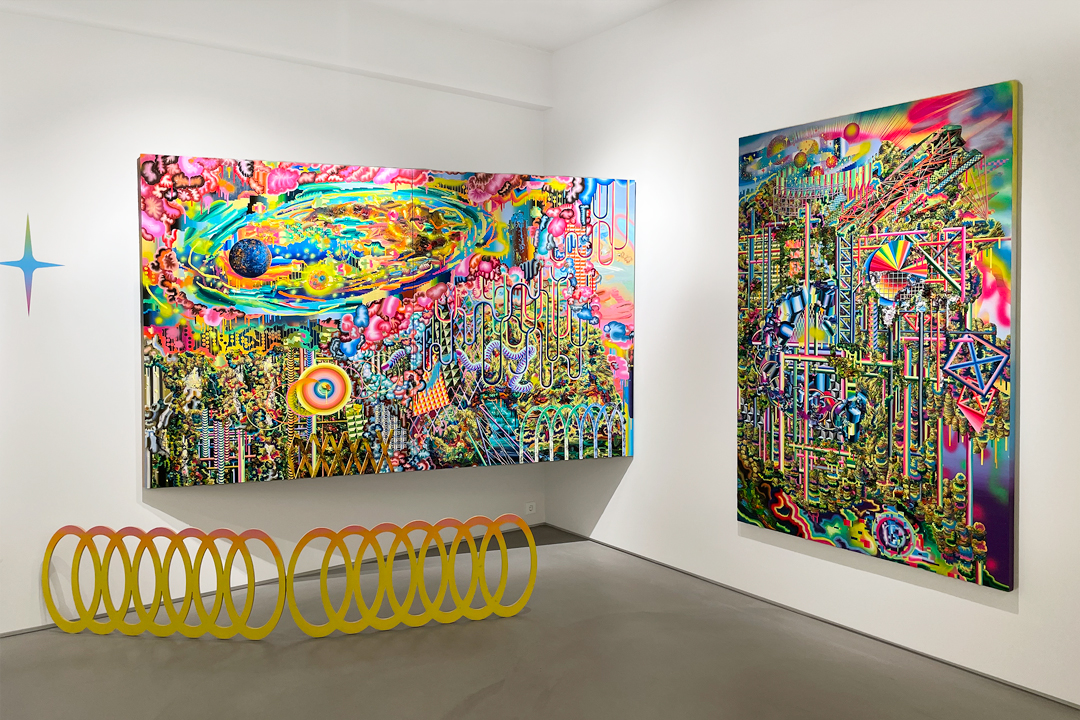
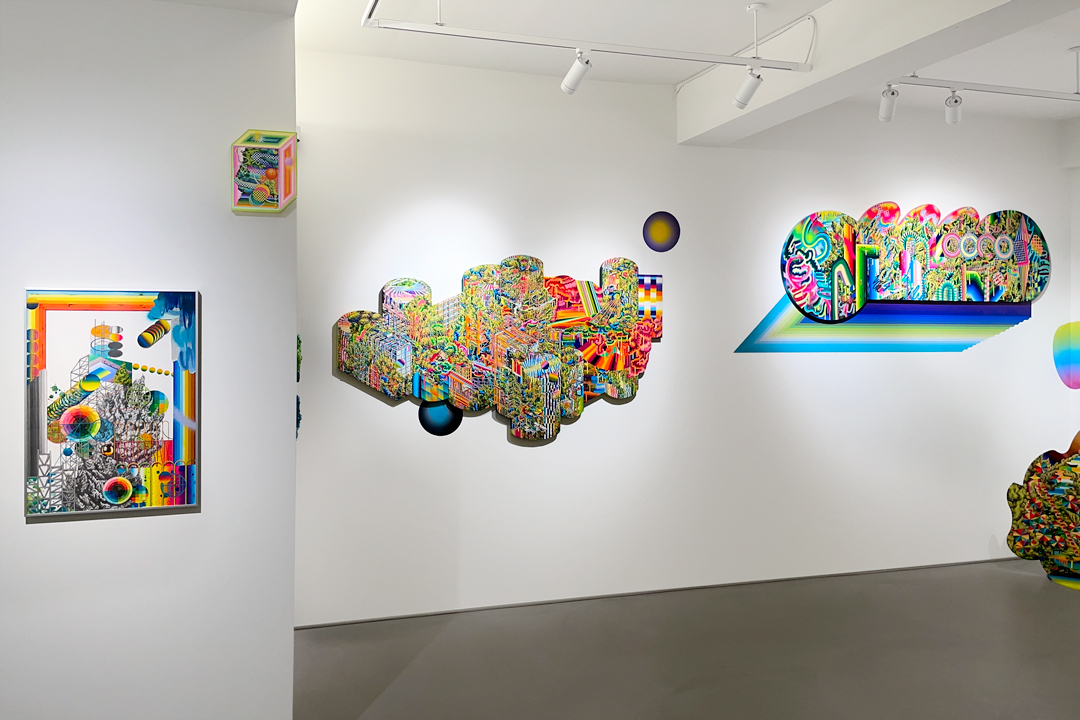
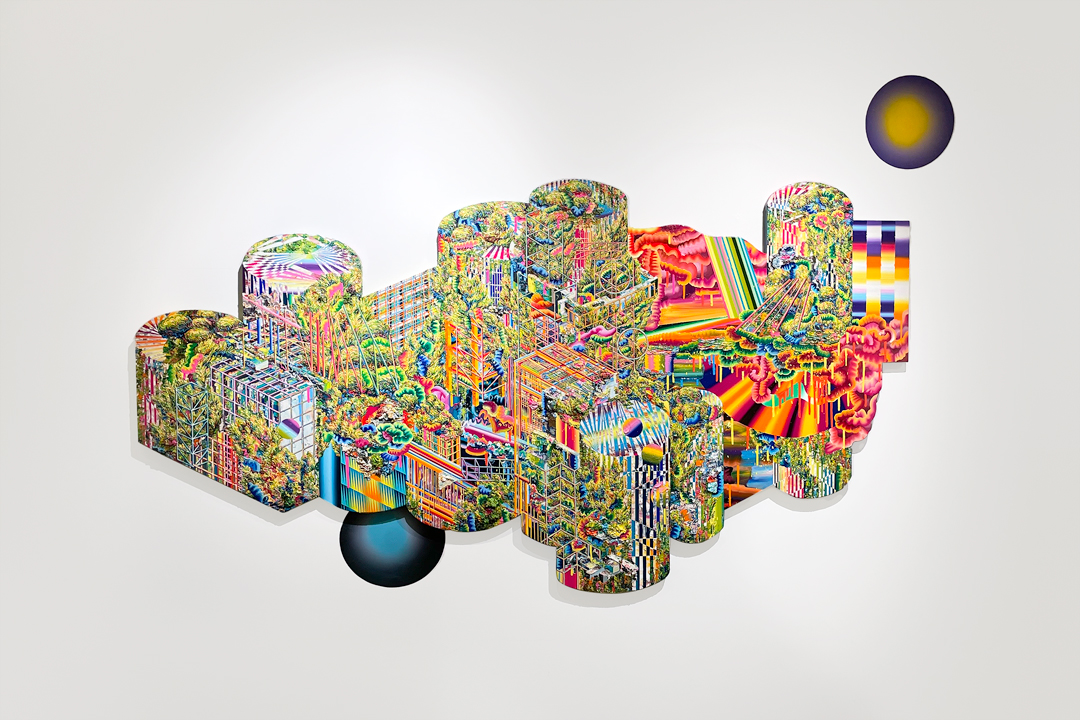
ⓒ서정아트
제1조 (목적)
본 이용약관(이하 “약관”)은 주식회사 서정아트프린팅(이하 ‘회사’)에서 운영하는 인터넷쇼핑몰(이하 “몰”)에서 제공하는 전자상거래 서비스(이하 “서비스”)를 이용함에 있어 “회사”와 “이용자”의 권리, 의무, 책임사항 및 “이용자”의 “서비스”이용절차에 관한 사항을 규정함을 목적으로 합니다.
제2조 (용어의 정의)
본 약관에서 사용되는 주요한 용어의 정의는 다음과 같습니다.
① “회사”가 운영하는 “몰”은 아래와 같습니다.
sjartprinting.com
② “몰”이란 주식회사 서정아트프린팅이 재화 또는 용역(이하 “재화 등”이라 함)을 이용자에게 제공하기 위하여 컴퓨터 등 정보통신설비를 이용하여 재화 등을 거래할 수 있도록 설정한 가상의 영업장을 말하며, 아울러 사이버몰을 운영하는 사업자의 의미로도 사용합니다.
③ “이용자”란 “몰”에 접속하여 이 약관에 따라 “몰”이 제공하는 서비스를 받는 회원 및 비회원을 말합니다.
④ “회원”이란 “몰”에 개인정보를 제공하고 약관을 승인하여 “몰”의 정보를 지속적으로 제공받으며, “몰”이 제공하는 서비스를 계속적으로 이용할 수 있는 자를 말합니다.
⑤ “비회원”이란 회원에 가입하지 않고 “몰”이 제공하는 서비스를 이용하는 자를 말합니다.
⑥ “아이디(ID)”란 회원의 식별과 서비스를 위하여 회원이 설정하고 회사가 승인한 문자와 숫자의 조합을 말합니다.
⑦ “비밀번호(PASSWORD)”란 회원의 동일성 확인과 회원정보의 보호를 위하여 회원이 설정하고 회사가 승인한 문자와 숫자의 조합을 말합니다.
제3조 (약관 등의 명시와 설명 및 개정)
① “회사”는 본 약관의 내용과 상호 및 대표자 성명, 영업소 소재지 주소(소비자가 불만을 처리할 수 있는 곳의 주소를 포함), 전화번호, 모사전송번호, 전자우편주소, 사업자등록번호, 통신판매업신고번호, 개인정보관리책임자 등을 이용자가 쉽게 알 수 있도록 “몰”의 초기 서비스화면(전면)에 게시합니다. 다만, 약관의 내용은 이용자가 연결화면을 통하여 볼 수 있도록 할 수 있습니다.
② “몰”은 이용자가 약관에 동의하기에 앞서 약관에 정하여져 있는 내용 중 청약철회, 배송책임, 환불조건 등과 같은 중요한 내용을 이용자가 이해할 수 있도록 별도의 연결화면 또는 팝업화면 등을 제공하여 이용자의 확인을 구하여야 합니다.
③ “회사”는 전자상거래 등에서의 소비자보호에 관한 법률, 약관의 규제에 관한 법률, 전자거래기본법, 전자서명법, 정보통신망이용촉진 및 정보보호 등에 관한 법률, 방문판매 등에 관한 법률, 소비자기본법 등 관련법을 위배하지 않는 범위에서 이 약관을 개정할 수 있습니다.
④ “회사”가 본 약관을 개정하는 경우에는 적용일자 및 개정사유를 명시하여 현행 약관과 함께 “몰”의 서비스 화면에 그 적용일자 7일 이전부터 적용일자 전일까지 공지합니다. 다만, 이용자에게 불리하게 약관내용을 변경하는 경우에는 최소한 30일 이상의 사전 유예기간을 두고 공지합니다. 이 경우 “몰”은 개정 전 내용과 개정 후 내용을 명확하게 비교하여 이용자가 알기 쉽도록 표시합니다.
⑤ “회사”가 약관을 개정할 경우에는 그 개정약관은 그 적용일자 이후에 체결되는 계약에만 적용되고 그 이전에 이미 체결된 계약에 대해서는 개정전의 약관조항이 그대로 적용됩니다. 다만 이미 계약을 체결한 이용자가 개정약관 조항의 적용을 받기를 원하는 뜻을 제3항에 의한 개정약관의 공지기간 내에 “몰”에 송신하여 “몰”의 동의를 받은 경우에는 개정약관 조항이 적용됩니다.
⑥ “회사”가 전항에 따라 개정약관을 공지 또는 통지하면서 이용자에게 전항의 기간 내에 의사표시를 하지 않으면 의사표시가 표명된 것으로 본다는 뜻을 명확하게 공지 또는 통지하였음에도 이용자가 명시적으로 거부의 의사표시를 하지 아니한 경우 이용자가 개정약관에 동의한 것으로 간주합니다.
⑦ 이용자는 개정된 약관에 대해 거부할 권리가 있습니다. 이용자는 약관의 변경에 대하여 주의의무를 다하여야 하며, 개정된 약관에 동의하지 않을 경우 회원가입을 해지할 수 있습니다.
⑧ 이용자는 정기적으로 서비스를 이용하여 본 약관의 변경사항을 확인할 의무가 있으며 개정된 약관에 동의한 이용자가 약관의 변경으로 인하여 발생한 피해 및 이용자의 과실로 개정된 약관의 내용을 알지 못해 발생하는 이용자의 피해는 “회사”에서 책임지지 않습니다.
⑨ 이 약관에서 정하지 아니한 사항과 그 약관의 해석에 관하여는 전자상거래 등에서의 소비자 보호에 관한 법률, 약관의 규제 등에 관한 법률, 공정거래위원회가 정하는
전자상거래 등 에서의 소비자보호지침 및 관계법령 또는 상관례에 따릅니다.
제4조 (서비스의 제공 및 변경)
① “몰”은 다음과 같은 업무를 수행합니다.
(1) 재화 또는 용역에 대한 정보 제공 및 구매계약의 체결
(2) 구매계약이 체결된 재화 또는 용역의 배송
(3) 기타 “몰”이 정하는 업무
② “몰”은 재화 또는 용역의 품절 또는 기술적 사양의 변경 등의 경우에는 장차 체결되는 계약에 의해 제공할 재화 또는 용역의 내용을 변경할 수 있습니다. 이 경우에는 변경된 재화 또는 용역의 내용 및 제공일자를 명시하여 현재의 재화 또는 용역의 내용을 게시한 곳에 즉시 공지합니다.
③ “몰”이 제공하기로 이용자와 계약을 체결한 서비스의 내용을 재화 등의 품절 또는 기술적 사양의 변경 등의 사유로 변경할 경우에는 그 사유를 이용자에게 통지 가능한 주소로 즉시 통지합니다.
④ 전항의 경우 “몰”은 이로 인하여 이용자가 입은 손해를 배상합니다. 다만, “몰”이 고의 또는 과실이 없음을 입증하는 경우에는 그러하지 아니합니다.
제 5조 (서비스의 중단)
① “몰”은 컴퓨터 등 정보통신설비의 보수점검, 교체 및 고장, 통신의 두절 등의 사유가 발생한 경우에는 서비스의 제공을 일시적으로 중단할 수 있습니다.
② “몰”은 제1항의 사유로 서비스의 제공이 일시적으로 중단됨으로 인하여 이용자 또는 제3자가 입은 손해에 대하여 배상합니다. 단, “몰”이 고의 또는 과실이 없음을 입증하는 경우에는 그러하지 아니합니다.
③ 사업종목의 전환, 사업의 포기, 업체간의 통합 등의 이유로 서비스를 제공할 수 없게 되는 경우에는 “몰”은 제 8조에서 정한 방법으로 이용자에게 통지하고 당초 “몰”에서 제시한 조건에 따라 소비자에게 보상합니다. 다만, “몰”이 보상기준 등을 고지하지 아니한 경우에는 이용자들의 마일리지 또는 적립금 등을 “몰”에서 통용되는 통화가치에 상응하는 현물 또는 현금으로 이용자에게 지급합니다.
제6조 (회원가입)
① 이용자는 “몰”이 정한 가입 양식에 따라 회원정보를 기입한 후 이 약관에 동의한다는 의사표시를 함으로서 회원가입을 신청합니다.
② “몰”은 제1항과 같이 회원으로 가입할 것을 신청한 이용자 중 다음 각호에 해당하지 않는 한 회원으로 등록합니다.
1. 가입신청자가 본 약관 제7조 3항에 의하여 이전에 회원자격을 상실한 적이 있는 경우, 다만 제7조3항에 의한 회원자격 상실 후 3년이 경과한 자로서 “몰”의 회원재가입 승낙을 얻은 경우에는 예외로 합니다.
2. 등록 내용에 허위, 기재누락, 오기가 있는 경우
3. 기타 회원으로 등록하는 것이 “몰”의 기술상 현저히 지장이 있다고 판단되는 경우
4. 14세 미만 아동이 법정대리인(부모 등)의 동의를 얻지 아니한 경우
③ 회원가입계약의 성립시기는 “몰”의 승낙이 회원에게 도달한 시점으로 합니다.
④ 회원은 회원가입 시 등록사항에 변경이 있는 경우, 상당한 기간 이내에 “몰”에 대하여 회원정보 수정 등의 방법으로 그 변경사항을 알려야 합니다.
제7조 (회원 탈퇴 및 자격 상실 등)
① 회원은 “몰”에 언제든지 탈퇴를 요청할 수 있으며 “몰”은 즉시 회원탈퇴를 처리합니다.
② 회원이 다음 각 호의 사유에 해당하는 경우, “몰”은 회원자격을 제한 및 정지시킬 수 있습니다.
1. 가입 신청 시 허위 내용을 등록한 경우
2. “몰”을 이용하여 구입한 재화 등의 대금, 기타 “몰”이용에 관련하여 회원이 부담하는 채무를 기일에 지급하지 않는 경우
3. 다른 사람의 “몰”이용을 방해하거나 그 정보를 도용하는 등 전자상거래 질서를 위협하는 경우
4. “몰”을 이용하여 법령 또는 본 약관이 금지하거나 공서양속에 반하는 행위를 하는 경우
③ “몰”이 회원자격을 제한, 정지 시킨 후, 동일한 행위가 2회 이상 반복되거나 30일 이내에 그 사유가 시정되지 아니하는 경우 “몰”은 회원자격을 상실시킬 수 있습니다.
④ “몰”이 회원자격을 상실시키는 경우에는 회원등록을 말소합니다. 이 경우 회원에게 이를 통지하고, 회원등록 말소 전에 최소한 30일 이상의 기간을 정하여 소명할 기회를 부여합니다.
제8조 (회원에 대한 통지)
① “몰”이 회원에 대한 통지를 하는 경우, 회원이 “몰”과 미리 약정하여 지정한 전자우편 주소로 할 수 있습니다.
② “몰”은 불특정다수 회원에 대한 통지의 경우 1주일 이상 “몰” 게시판에 게시함으로써 개별 통지에 갈음할 수 있습니다. 다만, 회원 본인의 거래와 관련하여 중대한 영향을 미치는 사항에 대하여는 개별 통지를 합니다.
제9조 (구매신청)
“몰” 이용자는 “몰”상에서 다음 또는 이와 유사한 방법에 의하여 구매를 신청하며, “몰”은 이용자가 구매신청을 함에 있어서 다음의 각 내용을 알기 쉽게 제공하여야 합니다.
1. 재화 등의 검색 및 선택
2. 성명, 주소, 전화번호, 전자우편주소(또는 이동전화번호) 등의 입력
3. 약관내용, 청약 철회권이 제한되는 서비스, 배송료, 설치비 등의 비용부담과 관련한 내용에 대한 확인
4. 본 약관에 동의하고 위 3호의 사항을 확인하거나 거부하는 표시(예, 마우스 클릭)
5. 재화 등의 구매신청 및 이에 관한 확인 또는 “몰”의 확인에 대한 동의
6. 결제방법의 선택
7. 기타 “몰”이 별도로 정하는 절차
제 10조 (계약의 성립)
① “몰”은 제 9조와 같은 구매신청에 대하여 다음 각호에 해당하면 승낙하지 않을 수 있습니다. 다만, 미성년자와 계약을 체결하는 경우에는 법정대리인의 동의를 얻지 못하면 미성년자 본인 또는 법정대리인이 계약을 취소할 수 있다는 내용을 고지하여야 합니다.
1. 신청 내용에 허위, 기재누락, 오기가 있는 경우
2. 미성년자가 담배, 주류 등 청소년보호법에서 금지하는 재화 및 용역을 구매하는 경우
3. 상행위(재판매)를 목적으로 구매하는 거래이거나, 거래 정황상 상행위(재판매)를 목적으로 한 구매로 판단되는 경우
4. 기타 구매신청에 승낙하는 것이 “몰” 기술상 현저히 지장이 있다고 판단하는 경우
② “몰”의 승낙이 제12조 제1항의 수신확인통지형태로 이용자에게 도달한 시점에 계약이 성립한 것으로 봅니다.
③ “몰”의 승낙의 의사표시에는 이용자의 구매 신청에 대한 확인 및 판매가능 여부, 구매신청의 정정 취소 등에 관한 정보 등을 포함하여야 합니다.
제 11조 (지급방법)
① “몰”에서 구매한 재화 또는 용역에 대한 대금지급방법은 다음 각 호의 방법 중 가용한 방법으로 할 수 있습니다.
1. 폰뱅킹, 인터넷뱅킹, 메일 뱅킹 등의 각종 계좌이체
2. 선불카드, 직불카드, 신용카드 등의 각종 카드 결제
3. 온라인 무통장 입금
4. 전자 화폐에 의한 결제
5. 수령 시 대금지급
6. 적립금 등 “몰”이 지급한 포인트에 의한 결제
7. “몰”과 계약을 맺었거나 “몰”이 인정한 상품권에 의한 결제
8. 기타 전자적 지급 방법에 의한 대금 지급 등
② “회사”는 이용자의 대금 지급에 법적, 기술적 문제가 발생하거나 “회사”가 예견하지 못한 장애(은행 통신망 장애 등)가 발생하는 경우 “회사”의 정책에 따라 이용자에게 결제 수단의 변경을 요청하거나 잠정 결제보류 내지 거부할 수 있습니다.
제12조 (수신확인통지, 구매신청 변경 및 취소)
① “몰”은 이용자의 구매신청이 있는 경우 이용자에게 수신확인통지를 합니다.
② 수신확인통지를 받은 이용자는 의사표시의 불일치 등이 있는 경우에는 수신확인통지를 받은 후 즉시 구매신청 변경 및 취소를 요청할 수 있고 “몰” 은 배송 전에 이용자의 요청이 있는 경우에는 지체 없이 그 요청에 따라 처리하여야 합니다. 다만 이미 대금을 지불한 경우에는 제15조의 청약철회 등에 관한 규정에 따릅니다.
제13조 (재화 등의 공급)
① “몰”은 이용자와 재화 등의 공급시기에 관하여 별도의 약정이 없는 이상, 이용자가 청약을 한 날부터 30일 이내에 재화 등을 배송할 수 있도록 주문제작, 포장 등 기타의 필요한 조치를 취합니다. 다만, “몰”이 이미 재화 등의 대금의 전부 또는 일부를 받은 경우에는 대금의 전부 또는 일부를 받은 날부터 3영업일 이내에 조치를 취합니다. 이때 “몰”은 이용자가 재화 등의 공급 절차 및 진행 사항을 확인할 수 있도록 적절한 조치를 합니다.
② “몰”은 이용자가 구매한 재화에 대해 배송수단, 수단별 배송비용 부담자, 수단별 배송기간 등을 명시합니다. 만약 “몰”이 약정 배송기간을 초과한 경우에는 그로 인한 이용자의 손해를 배상하여야 합니다. 다만 “몰”이 고의. 과실이 없음을 입증한 경우에는 그러하지 아니합니다.
제14조 (환급)
“몰”은 이용자가 구매 신청한 재화 등이 품절 등의 사유로 인도 또는 제공을 할 수 없을 때에는 지체 없이 그 사유를 이용자에게 통지하고 사전에 재화 등의 대금을 받은 경우에는 대금을 받은 날부터 7영업일 이내에 환급하거나 환급에 필요한 조치를 취합니다.
제15조 (청약 철회 등)
① “몰”과 재화 등의 구매에 관한 계약을 체결한 이용자는 수신확인의 통지를 받은 날부터 7일 이내에는 청약의 철회를 할 수 있습니다.
② 이용자의 단순 변심에 의한 취소 및 환불일 경우 이의 처리에 발생하는 수수료는 이용자가 부담한다.
③ 이용자는 재화 등을 배송 받은 경우 다음 각 호의 1에 해당하는 경우에는 반품 및 교환을 할 수 없습니다.
1. 이용자에게 책임 있는 사유로 재화 등이 멸실 또는 훼손된 경우(다만, 재화 등의 내용을 확인하기 위하여 포장 등을 훼손한 경우에는 청약철회를 할 수 있습니다)
2. 이용자의 사용 또는 일부 소비에 의하여 재화 등의 가치가 현저히 감소한 경우
3. 시간의 경과에 의하여 재판매가 곤란할 정도로 재화 등의 가치가 현저히 감소한 경우
4. 같은 성능을 지닌 재화 등으로 복제가 가능한 경우 그 원본인 재화 등의 포장을 훼손한 경우
④ 제3항 제2호 내지 제4호의 경우에 “몰”이 사전에 청약철회 등이 제한되는 사실을 소비자가 쉽게 알 수 있는 곳에 명기하거나 시용상품을 제공하는 등의 조치를 하지 않았다면 이용자의 청약철회 등이 제한되지 않습니다.
⑤ 이용자는 제1항 및 제2항의 규정에 불구하고 재화 등의 내용이 표시, 광고 내용과 다르거나 계약내용과 다르게 이행된 때에는 당해 재화 등을 공급받은 날부터 30일 이내, 그 사실을 안 날 또는 알 수 있었던 날부터 30일 이내에 청약철회 등을 할 수 있습니다.
제16조 (청약 철회 등의 효과)
① “몰”은 이용자로부터 재화 등을 반환 받은 경우 7영업일 이내에 이미 지급받은 재화 등의 대금을 환급합니다. 이 경우 “몰”이 이용자에게 재화 등의 환급을 지연한 때에는 그 지연기간에 대하여 공정거래위원회가 정하여 고시하는 지연이자율을 곱하여 산정한 지연이자를 지급합니다.
② “몰”은 위 대금을 환급함에 있어서 이용자가 신용카드 또는 전자화폐 등의 결제수단으로 재화 등의 대금을 지급한 때에는 지체 없이 당해 결제수단을 제공한 사업자로 하여금 재화 등의 대금의 청구를 정지 또는 취소하도록 요청합니다.
③ 청약철회 등의 경우 공급받은 재화 등의 반환에 필요한 비용은 이용자가 부담합니다. “몰”은 이용자에게 청약철회 등을 이유로 위약금 또는 손해배상을 청구하지 않습니다. 다만 재화 등의 내용이 표시. 광고 내용과 다르거나 계약내용과 다르게 이행되어 청약철회 등을 하는 경우 재화 등의 반환에 필요한 비용은 “몰”이 부담합니다.
④ 이용자가 재화 등을 제공받을 때 발송비를 부담한 경우에 “몰”은 청약철회 시 그 비용을 누가 부담하는지를 이용자가 알기 쉽도록 명확하게 표시합니다.
제17조 (개인정보보호)
① “몰”은 이용자의 개인정보 수집 시 서비스 제공을 위해 필요한 최소한의 정보를 수집합니다. 다음 사항을 필수사항으로 하며 그 외 사항은 선택사항으로 합니다.
1. 성명
2. 주소
3. 이동전화번호
4. 전화번호
5. 희망ID(회원의 경우)
6. 비밀번호(회원의 경우)
7. 전자우편주소
② “몰”이 이용자의 개인식별이 가능한 개인정보를 수집하는 때에는 반드시 당해 이용자의 동의를 받습니다.
③ 제공된 개인정보는 당해 이용자의 동의 없이 목적 외의 이용이나 제3자에게 제공할 수 없으며, 이에 대한 모든 책임은 “몰”이 집니다. 다만, 다음의 경우에는 예외로 합니다.
1. 배송업무상 배송업체에게 배송에 필요한 최소한의 이용자의 정보(성명, 주소, 전화번호)를 알려주는 경우
2. 통계작성, 학술연구 또는 시장조사를 위하여 필요한 경우로서 특정 개인을 식별할 수 없는 형태로 제공하는 경우
3. 재화 등의 거래에 따른 대금정산을 위하여 필요한 경우
4. 도용방지를 위하여 본인확인에 필요한 경우
5. 법률의 규정 또는 법률에 의하여 필요한 불가피한 사유가 있는 경우
④ “몰”이 제2항과 제3항에 의해 이용자의 동의를 받아야 하는 경우에는 개인정보관리 책임자의 신원(소속, 성명 및 전화번호, 기타 연락처), 정보의 수집목적 및 이용목적, 제3자에 대한 정보제공 관련사항(제공 받은 자, 제공목적 및 제공할 정보의 내용) 등 정보통신망이용촉진 등에 관한 법률 제22조 제2항이 규정한 사항을 미리 명시하거나 고지해야 하며 이용자는 언제든지 이 동의를 철회할 수 있습니다.
⑤ 이용자는 언제든지 “몰”이 가지고 있는 자신의 개인정보에 대해 열람 및 오류정정을 요구할 수 있으며 “몰”은 이에 대해 지체 없이 필요한 조치를 취할 의무를 집니다.
⑥ 이용자가 오류의 정정을 요구한 경우에는 “몰”은 그 오류를 정정할 때까지 당해 개인정보를 이용하지 않습니다.
⑦ “몰”은 개인정보 보호를 위하여 관리자를 한정하여 그 수를 최소화하며 신용카드, 은행계좌 등을 포함한 이용자의 개인정보의 분실, 도난, 유출, 변조 등으로 인한 이용자의 손해에 대하여 책임을 집니다.
⑧ “몰” 또는 그로부터 개인정보를 제공받은 제3자는 개인정보의 수집목적 또는 제공받은 목적을 달성한 때에는 당해 개인정보를 지체 없이 파기합니다.
제18조 (“몰“의 의무)
① “몰”은 법령과 이 약관이 금지하거나 공서양속에 반하는 행위를 하지 않으며 이 약관이 정하는 바에 따라 지속적이고, 안정적으로 재화. 용역을 제공하는데 최선을 다하여야 합니다.
② “몰”은 이용자가 안전하게 인터넷 서비스를 이용할 수 있도록 이용자의 개인정보(신용정보 포함)보호를 위한 보안 시스템을 갖추어야 합니다.
③ “몰”이 상품이나 용역에 대하여 「표시. 광고의 공정화에 관한 법률」 제3조 소정의 부당한 표시. 광고행위를 함으로써 이용자가 손해를 입은 때에는 이를 배상할 책임을 집니다.
제19조 (회원의 ID 및 비밀번호에 대한 의무)
1. 제17조의 경우를 제외한 ID와 비밀번호에 관한 관리책임은 회원에게 있습니다.
2. 회원은 자신의 ID 및 비밀번호를 제3자에게 이용하게 해서는 안됩니다.
3. 회원이 자신의 ID 및 비밀번호를 도난 당하거나 제3자가 사용하고 있음을 인지한 경우에는 바로 “몰”에 통보하고 “몰”의 안내가 있는 경우에는 그에 따라야 합니다.
제20조(이용자의 의무)
이용자는 다음 행위를 하여서는 안됩니다.
1. 신청 또는 변경 시 허위 내용의 등록
2. 타인의 정보 도용
3. “몰”에 게시된 정보의 변경
4. “몰”이 정한 정보 이외의 정보(컴퓨터 프로그램 등) 등의 송신 또는 게시
5. “몰” 기타 제3자의 저작권 등 지적재산권에 대한 침해
6. “몰” 기타 제3자의 명예를 손상시키거나 업무를 방해하는 행위
7. 외설 또는 폭력적인 메시지, 화상, 음성, 기타 공서양속에 반하는 정보를 몰에 공개 또는 게시하는 행위
제21조 (연결“몰”과 피연결 “몰” 간의 관계)
① 상위 “몰”과 하위 “몰”이 하이퍼링크(예: 하이퍼 링크의 대상에는 문자, 그림 및 동화상 등이 포함됨)방식 등으로 연결된 경우, 전자를 연결 “몰”(웹 사이트)이라고 하고 후자를 피연결 “몰”(웹사이트)이라고 합니다.
② 연결 “몰”은 피연결 “몰”이 독자적으로 제공하는 재화 등에 의하여 이용자와 행하는 거래에 대해서 보증책임을 지지 않는다는 뜻을 연결“몰”의 초기화면 또는 연결되는 시점의 팝업화면으로 명시한 경우에는 그 거래에 대한 보증책임을 지지 않습니다.
제22조(저작권의 귀속 및 이용제한)
① “몰“이 작성한 저작물에 대한 저작권 기타 지적재산권은 ”몰“에 귀속합니다.
② 이용자는 “몰”을 이용함으로써 얻은 정보 중 “몰”에게 지적재산권이 귀속된 정보를 “몰”의 사전 승낙 없이 복제, 송신, 출판, 배포, 방송 기타 방법에 의하여 영리목적으로 이용하거나 제3자에게 이용하게 하여서는 안됩니다.
③ “몰”은 약정에 따라 이용자에게 귀속된 저작권을 사용하는 경우 당해 이용자에게 통보하여야 합니다.
제23조(분쟁해결)
① “몰”은 이용자가 제기하는 정당한 의견이나 불만을 반영하고 그 피해를 보상처리하기 위하여 피해보상처리기구를 설치, 운영합니다.
② “몰”은 이용자로부터 제출되는 불만사항 및 의견은 우선적으로 그 사항을 처리합니다. 다만, 신속한 처리가 곤란한 경우에는 이용자에게 그 사유와 처리일정을 즉시 통보해 드립니다.
③ “몰”과 이용자 간에 발생한 전자상거래 분쟁과 관련하여 이용자의 피해구제신청이 있는 경우에는 공정거래위원회 또는 시, 도지사가 의뢰하는 분쟁조정기관의 조정에 따를 수 있습니다.
제24조(재판권 및 준거법)
① “몰”과 이용자 간에 발생한 전자상거래 분쟁에 관한 소송은 제소 당시의 이용자의 주소에 의하고, 주소가 없는 경우에는 거소를 관할하는 지방법원의 전속관할로 합니다. 다만, 제소 당시 이용자의 주소 또는 거소가 분명하지 않거나 외국 거주자의 경우에는 민사소송법상의 관할법원에 제기합니다.
② “몰”과 이용자 간에 제기된 전자상거래 소송에는 대한민국의 법령을 적용합니다.
제25조(정보의 제공 및 광고의 게재)
① “회사”는 “회원”이 “몰” 이용 중 필요하다고 인정되는 다양한 정보를 공지사항 또는 전자우편이나 서신우편, SMS, 전화, 모바일메신저 등의 방법으로 회원에게 제공할 수 있습니다. 다만, 회원은 관련법에 따른 거래관련정보 및 고객문의 등에 대한 답변 등을 제외하고는 언제든지 전화, 우편 등에 대해서 수신 거절을 할 수 있습니다.
② “회사”는 “몰”의 운영과 관련하여 서비스 화면, 홈페이지, 전자우편이나 서신우편, SMS, 전화, 모바일메신저 등에 광고를 게재할 수 있습니다. 광고가 게재된 전자우편 등을 수신한 회원은 수신거절의 의사표시를 할 수 있으며, 회사는 수신거절을 위한 방법을 회원에게 제공합니다.
③ 다만, “회사”는 “몰”이용에 필수적으로 요구되는 정보(예: 관련 규정/정책의 변경 등)에 대해서는 “회원”의 수신거부의사와 무관하게 이를 제공 할 수 있습니다.
④ “회원”의 가입과 동시에 제25조 1,2항의 “회사”의 정보 제공에 대해 수신동의 한 것으로 간주합니다.
제 26조(기타조항)
① “몰”은 회원이 제기하는 정당한 의견이나 불만을 반영하고 그 문제를 해결하고 회원 상호 간의 분쟁을 조정하기 위하여 고객센터를 설치, 운영합니다. “몰”은 회원으로부터 제기되는 불만사항 및 의견이 정당하다고 판단되는 경우 이를 신속하게 처리하며, 즉시처리가 곤란한 경우에는 그 사유와 처리기간을 통보합니다.
② 본 서비스를 위반하거나 서비스 이용 시 불편사항이 발생한 경우 sjartprinting@gmail.com 을 이용하시거나 전화(1566-2793)로 알려주시면 성심 성의껏 처리해 드리겠습니다.
최종개정일: 2019년 11월 20일
주식회사 서정아트프린팅(이하 “회사”)은 고객님의 개인정보를 중요시하며, "정보통신망 이용촉진 및 정보보호"에 관한 법률을 준수하고 있습니다.
“회사”는 개인정보취급방침을 통하여 고객님께서 제공하시는 개인정보가 어떠한 용도와 방식으로 이용되고 있으며, 개인정보보호를 위해 어떠한 조치가 취해지고 있는지 알려드립니다.
“회사”는 “회사”의 개인정보처리방침을 개정하는 경우 “회사”가 운영하는 서정아트프린팅(www.sjartprinting.com 이하 “몰”) 공지사항(또는 개별공지)을 통하여 공지할 것입니다.
제 1조 (수집하는 개인정보 항목 및 방법)
“회사”는 회원에게 본인확인, 상담, 결제 서비스 및 다양하고 편리한 서비스를 제공하기 위해 아래의 방법을 통해 개인정보를 수집하고 있습니다.
① 개인정보 수집항목: 이름, 생년월일, 성별 , 로그인ID , 비밀번호 , 자택 전화번호 , 자택 주소 , 휴대전화번호 , 이메일 , 쿠키 , 결제기록
② 개인정보 수집방법: 홈페이지(회원가입)
제 2조 (개인정보의 수집 및 이용목적)
“회사”는 수집한 개인정보를 다음의 목적을 위해 활용합니다.
① 회원 관리
회원제 서비스 이용에 따른 본인확인, 개인 식별, 불량회원의 부정 이용 방지와 비인가 사용 방지, 가입 의사 확인, 연령확인, 불만처리 등 민원처리, 고지사항 전달
② 서비스 제공에 관한 계약 이행 및 서비스 제공에 따른 정산
콘텐츠 제공, 구매 및 요금 결제, 물품배송 또는 청구지 등 발송, 금융거래 본인 인증 및 금융 서비스
③ 마케팅 및 광고에 활용
이벤트 등 광고성 정보 전달, 접속 빈도 파악 또는 회원의 서비스 이용에 대한 통계
제 3조 (개인정보의 보유 및 이용기간)
원칙적으로, 개인정보 수집 및 이용목적이 달성된 후에는 해당 정보를 지체 없이 파기합니다. 단, 관계법령의 규정에 의하여 보존할 필요가 있는 경우 “회사”는 아래와 같이 관계법령에서 정한 일정한 기간 동안 회원정보를 보관합니다.
1. 보존 항목: 결제기록
2. 보존 근거: 계약 또는 청약철회 등에 관한 기록
3. 보존 기간: 3년
4. 계약 또는 청약철회 등에 관한 기록: 5년 (전자상거래등에서의 소비자보호에 관한 법률)
5. 대금결제 및 재화 등의 공급에 관한 기록: 5년 (전자상거래등에서의 소비자보호에 관한 법률)
6. 소비자의 불만 또는 분쟁처리에 관한 기록: 3년 (전자상거래등에서의 소비자보호에 관한 법률)
제 4조 (개인정보의 파기절차 및 방법)
“회사”는 원칙적으로 개인정보 수집 및 이용목적이 달성된 후에는 해당 정보를 지체없이 파기합니다. 파기절차 및 방법은 다음과 같습니다.
① 파기절차
회원님이 회원가입 등을 위해 입력하신 정보는 목적이 달성된 후 별도의 DB로 옮겨져(종이의 경우 별도의 서류함) 내부 방침 및 기타 관련 법령에 의한 정보보호 사유에 따라(보유 및 이용기간 참조) 일정 기간 저장된 후 파기되어집니다.
별도 DB로 옮겨진 개인정보는 법률에 의한 경우가 아니고서는 보유되어지는 이외의 다른 목적으로 이용되지 않습니다.
② 파기방법
전자적 파일형태로 저장된 개인정보는 기록을 재생할 수 없는 기술적 방법을 사용하여 삭제합니다.
제 5조 (개인정보 제공)
“회사”는 이용자의 개인정보를 원칙적으로 외부에 제공하지 않습니다. 다만, 아래의 경우에는 예외로 합니다.
1. 이용자들이 사전에 동의한 경우
2. 법령의 규정에 의거하거나, 수사 목적으로 법령에 정해진 절차와 방법에 따라 수사기관의 요구가 있는 경우
제 6조 (이용자 및 법정대리인의 권리와 그 행사방법)
① 이용자는 언제든지 등록되어 있는 자신의 개인정보를 조회하거나 수정할 수 있으며 가입해지를 요청할 수도 있습니다.
② 이용자들의 개인정보 조회, 수정을 위해서는 '개인정보변경'(또는 '회원정보수정' 등)을 가입해지(동의철회)를 위해서는 "회원탈퇴"를 클릭하여 본인 확인 절차를 거치신 후 직접 열람, 정정 또는 탈퇴가 가능합니다.
혹은 개인정보관리책임자에게 서면, 전화 또는 이메일로 연락하시면 지체없이 조치하겠습니다.
③ 귀하가 개인정보의 오류에 대한 정정을 요청하신 경우에는 정정을 완료하기 전까지 당해 개인정보를 이용 또는 제공하지 않습니다. 또한 잘못된 개인정보를 제3자에게 이미 제공한 경우에는 정정 처리결과를 제3자에게 지체없이 통지하여 정정이 이루어지도록 하겠습니다.
④ “회사”는 이용자의 요청에 의해 해지 또는 삭제된 개인정보는 "회사가 수집하는 개인정보의 보유 및 이용기간"에 명시된 바에 따라 처리하고 그 외의 용도로 열람 또는 이용할 수 없도록 처리하고 있습니다.
제 7조 (개인정보 자동수집 장치의 설치, 운영 및 그 거부에 관한 사항)
“회사”는 귀하의 정보를 수시로 저장하고 찾아내는 '쿠키(cookie)' 등을 운용합니다. 쿠키란 웹사이트를 운영하는데 이용되는 서버가 귀하의 브라우저에 보내는 아주 작은 텍스트 파일로서 귀하의 컴퓨터 하드디스크에 저장됩니다. “회사”는 다음과 같은 목적을 위해 쿠키를 사용합니다.
① 쿠키 등 사용 목적
1. 회원과 비회원의 접속 빈도나 방문 시간 등을 분석, 이용자의 취향과 관심분야를 파악 및 자취 추적, 각종 이벤트 참여 정도 및 방문 회수 파악 등을 통한 타겟 마케팅 및 개인 맞춤 서비스 제공
2. 귀하는 쿠키 설치에 대한 선택권을 가지고 있습니다. 따라서, 귀하는 웹브라우저에서 옵션을 설정함으로써 모든 쿠키를 허용하거나, 쿠키가 저장될 때마다 확인을 거치거나, 아니면 모든 쿠키의 저장을 거부할 수도 있습니다.
② 쿠키 설정 거부 방법
쿠키 설정을 거부하는 방법으로는 회원님이 사용하시는 웹 브라우저의 옵션을 선택함으로써 모든 쿠키를 허용하거나 쿠키를 저장할 때마다 확인을 거치거나, 모든 쿠키의 저장을 거부할 수 있습니다.
설정방법 예(인터넷 익스플로어의 경우)
: 웹 브라우저 상단의 도구 > 인터넷 옵션 > 개인정보
단, 귀하께서 쿠키 설치를 거부하였을 경우 서비스 제공에 어려움이 있을 수 있습니다.
제 8조 (개인정보에 관한 민원서비스)
“회사”는 고객의 개인정보를 보호하고 개인정보와 관련한 불만을 처리하기 위하여 아래와 같이 관련 부서 및 개인정보관리책임자를 지정하고 있습니다.
고객서비스담당 부서: 서정아트프린팅 온라인팀
전화번호: 1566-2793 이메일 : sjartprinting@gmail.com
개인정보관리책임자 성명 : 민유진
이메일 : sjartprinting@gmail.com
귀하께서는 회사의 서비스를 이용하시며 발생하는 모든 개인정보보호 관련 민원을 개인정보관리책임자 혹은 담당부서로 신고하실 수 있습니다. 회사는 이용자들의 신고사항에 대해 신속하게 충분한 답변을 드릴 것입니다.
기타 개인정보침해에 대한 신고나 상담이 필요하신 경우에는 아래 기관에 문의하시기 바랍니다.
1. 개인분쟁조정위원회 (www.1336.or.kr/1336)
2. 정보보호마크인증위원회 (www.eprivacy.or.kr/02-580-0533~4)
3. 대검찰청 인터넷범죄수사센터 (http://icic.sppo.go.kr/02-3480-3600)
4. 경찰청 사이버테러대응센터 (www.ctrc.go.kr/02-392-0330)
| 통신판매번호 | 제 2020-서울강남-01810 호 | 사업자등록번호 | 321-86-01292 |
|---|---|---|---|
| 신고형황 | 통신판매업신고 | 법인여부 | 법인 |
| 상호 | 주식회사 서정아트프린팅 | ||
| 대표자명 | 강대준 | 대표전화번호 | 1566-2793 |
| 판매방식 | 인터넷 | 취급품목 | 전자상거래, 판화, |
| 전자우편(E-mail) | sjartprinting@gmail.com | 신고일자 | 2020년 09월 17일 |
| 사업장소재지 | |||
| 사업장소재지(도로명) | 서울시 강남구 봉은사로47길 12, 2동 지하층 101호(논현동, 진현빌딩) | ||
| 인터넷도메인 | sjartprinting.com | ||
| 호스트서버소재지 | |||
| 통신판매업 신고기관명 | 서울특별시 강남구청 | ||
본자료는 전자상거래시장에서 소비자가 정확한 사업자 정보를 가지고 안전한 거래를 할 수 있도록 전국 시,군,구에 신고된 통신판매업자의 신원정보를 전자상거래소비자보 호법 제12조4항 에 따라 제공하는 정보입니다. 사업자 정보에 대한 궁금한 사항이나 사업자의 신원정보가 정보공개 내용과 불일치할 경우에는 사업자 정보검색시 확인되는 해당 신고기관(지방자치단체)에 문의하여 주시기 바랍니다.
일부 사업자의 경우, 부가가치세법상 사업자 폐업 신고는 하였으나 전자상거래법상 통신판매업 폐업 신고는 하지 않은 사례가 있을 수 있습니다. 소비자 피해를 방지하기 위해 부가가치세법상 사업자 폐업 여부도 국세청 홈택스 페이지(www.hometax.go.kr)의 사업자등록상태조회 코너를 통해 확인하시기 바랍니다. [바로가기 링크]







